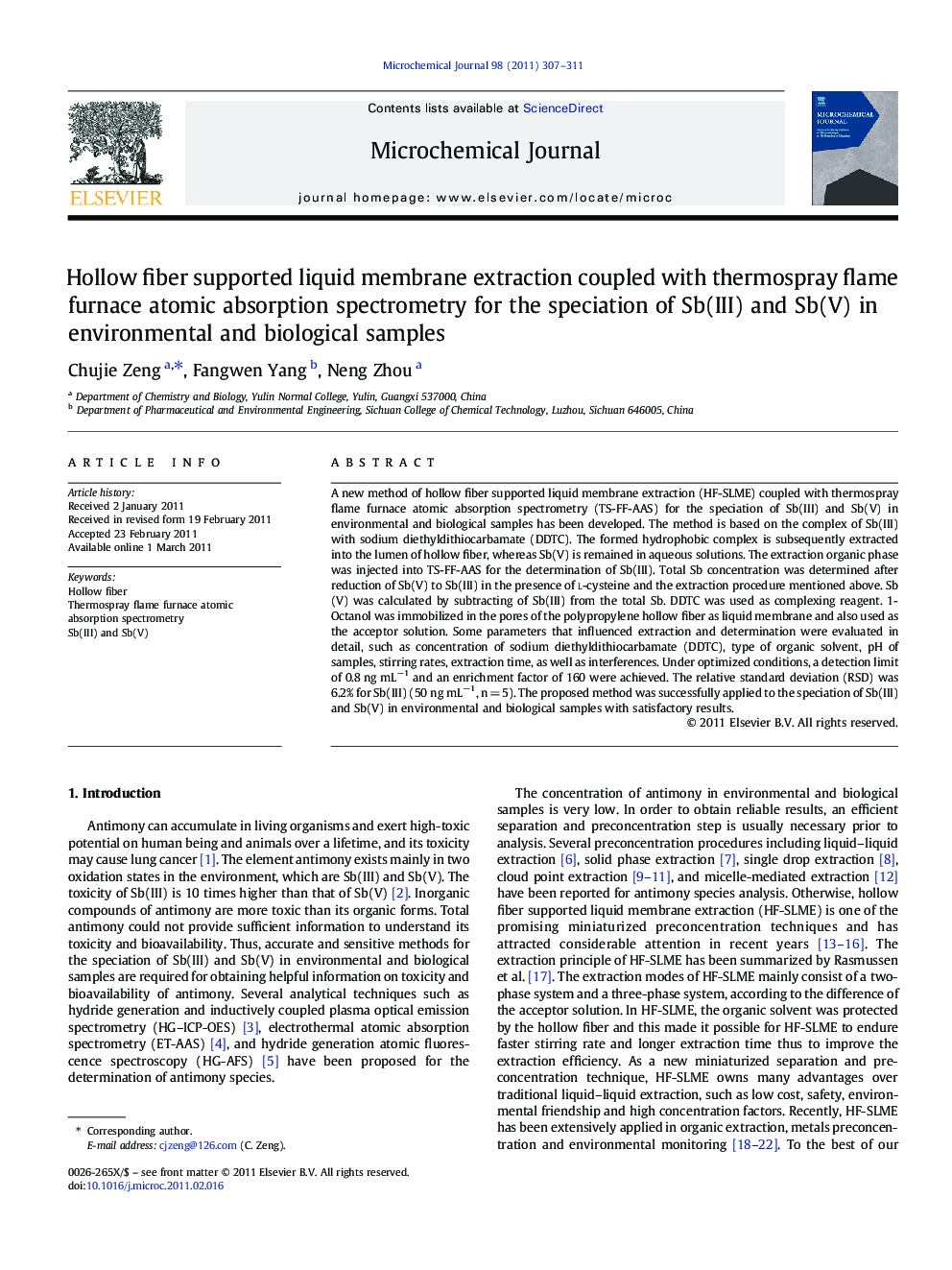| Article ID | Journal | Published Year | Pages | File Type |
|---|---|---|---|---|
| 1228042 | Microchemical Journal | 2011 | 5 Pages |
A new method of hollow fiber supported liquid membrane extraction (HF-SLME) coupled with thermospray flame furnace atomic absorption spectrometry (TS-FF-AAS) for the speciation of Sb(III) and Sb(V) in environmental and biological samples has been developed. The method is based on the complex of Sb(III) with sodium diethyldithiocarbamate (DDTC). The formed hydrophobic complex is subsequently extracted into the lumen of hollow fiber, whereas Sb(V) is remained in aqueous solutions. The extraction organic phase was injected into TS-FF-AAS for the determination of Sb(III). Total Sb concentration was determined after reduction of Sb(V) to Sb(III) in the presence of l-cysteine and the extraction procedure mentioned above. Sb(V) was calculated by subtracting of Sb(III) from the total Sb. DDTC was used as complexing reagent. 1-Octanol was immobilized in the pores of the polypropylene hollow fiber as liquid membrane and also used as the acceptor solution. Some parameters that influenced extraction and determination were evaluated in detail, such as concentration of sodium diethyldithiocarbamate (DDTC), type of organic solvent, pH of samples, stirring rates, extraction time, as well as interferences. Under optimized conditions, a detection limit of 0.8 ng mL−1 and an enrichment factor of 160 were achieved. The relative standard deviation (RSD) was 6.2% for Sb(III) (50 ng mL−1, n = 5). The proposed method was successfully applied to the speciation of Sb(III) and Sb(V) in environmental and biological samples with satisfactory results.
